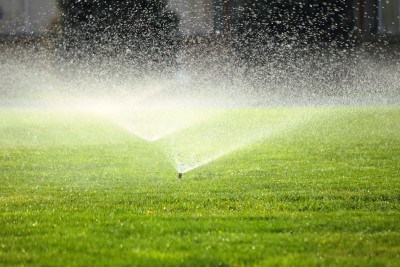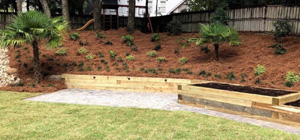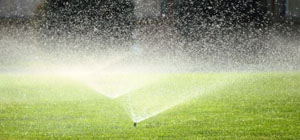 Use of rain sensors helps to prevent watering during or immediately following a rainfall. The best time to water is late night/early morning, finishing before sunrise.
Use of rain sensors helps to prevent watering during or immediately following a rainfall. The best time to water is late night/early morning, finishing before sunrise.
Winds are lightest and temps are coolest, and there is already dew on the ground. This prevents waste and helps reduce the likelihood of disease development.
Deep, infrequent watering is ideal. It encourages a deep, drought-tolerant root system. Shallow, frequent watering creates a shallow root system that is particularly susceptible to drought.
If your lawn requires more, you may need irrigation system repairs or adjustments by a trained professional. ***The best way to determine run time to is have irrigation system evaluated by a professional
Late Fall to Early Spring
Usually we receive at least one good rain event per ten days, and this natural rainfall is usually sufficient for your lawn watering needs at this time of year. If no rain, then no more than one watering per seven days with an irrigation system is adequate.
Spray head: about 6 to 15 mins (*depends on nozzle)
Rotor head: 20 to 40 mins (depends on nozzle)
Spring to Early Summer
Normal rain patterns during this time of year are usually sufficient for your lawn watering needs. However, temperatures are increasing and grass is growing, so the demand for water is higher. When no rain, watering about every four days is recommended.
Spray head: about 6 to 15 mins (*depends on nozzle)
Rotor head: 20 to 40 mins (depends on nozzle)
Summer to Early Fall
Rainfall amounts can vary widely this time of year. Temperatures are at the highest of the year and your lawn needs between 1 to 4 inches of water per week. Supplement rainfall by watering every three days but no more than every other day.
Spray head: about 6 to 15 mins (*depends on nozzle)
Rotor head: 20 to 40 mins (depends on nozzle)
Water Requirements by Grass Type
Bermuda – 1 to 2 inches per week
Centipede – 1 to 2 inches per week
Zoysia – 1 to 3 inches per week
St. Augustine – 2 to 4 inches per week






























